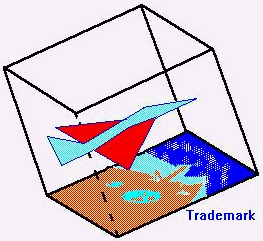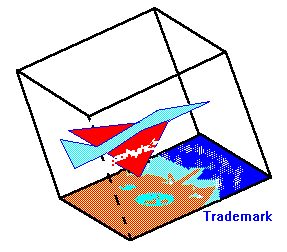In the 1963-64 academic year, I was assigned to teach Experimental Mechanics via television. I hated the
assignment. How could I keep in touch with the students? Lance Berglund, an Electrical Engineering student, set up the TV studio and classroom arrangements. Each of three classrooms down the hall from
the studio had two TV monitors: one to show me and another to show details about the subject I was teaching at the moment. A teaching assistant was assigned to each classroom. I decided that one minute before each class period and one minute after were mine to use as I pleased. If I stunted cleverly enough
for a minute, Lance and I could hear laughter coming down the hall from the classrooms to the studio.
I reasoned that students would come to class to participate in the stunts, even if the class topics were
dull. One day I lectured in a stuffy professorial way about friction of a rope over a pulley. I theorized that one might choose to lower himself on a rope using a shoulder as a pulley. A carabiner would be
used to change rope direction. As the end of class period bell resounded through the building I said
"What good is all this crap if we do not use it? See you in the stairwell."
Lance had tied my climbing room to the pipe banister and extended it down the circular stairwell to the
basement. The students rushed from the classrooms to line the stairs. I climbed over the banister and
attempted to get in rappelling position on the rope. I had to hold onto the banister with one hand while transferring my weight to the rope. I realized that in doing so, I could very easily fall to the basement
rather than rappel. Lance sensed I was in trouble, reached over the railing and grabbed my jacket shoulder to take my weight while I let go of the handrail and prepared to rappel. He saved my life.
I rappelled successfully to the sound of student cheers. Fellow staff members and the Department Head
did not even stir from their offices to see what caused the commotion. They knew by the time of day
that Bowie must have been stunting again. |




























 .
.

